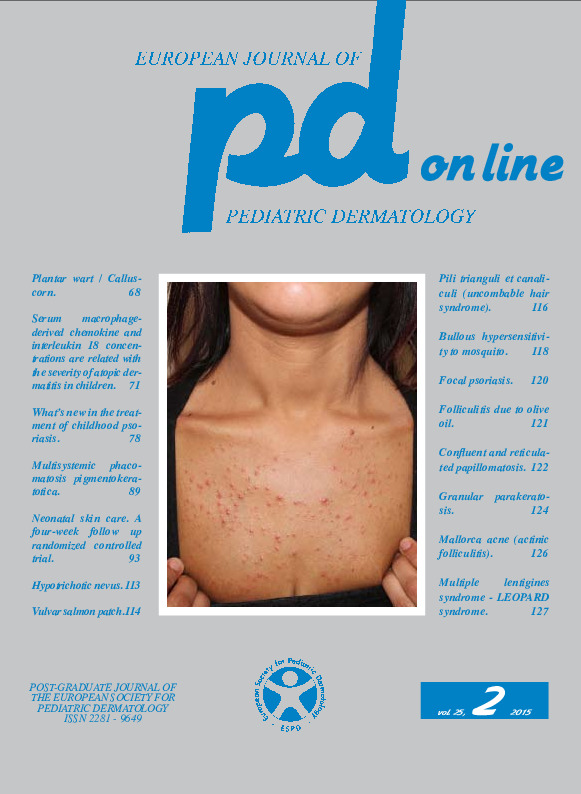Bullous hypersensitivity to mosquito.
Downloads
DOI:
https://doi.org/10.26326/2281-9649.25.2.1114How to Cite
Bonifazi E. 2015. Bullous hypersensitivity to mosquito. Eur. J. Pediat. Dermatol. 25 (2):118-19. 10.26326/2281-9649.25.2.1114.
pp. 118-119
Abstract
In late spring and summer the mosquito with its saliva is the most frequent cause of hypersensitivity reactions. The latter are in most cases of mixed type, immediate with erythematous and edematous lesions, and delayed with a central papule and vesicle appearing 8-72 hours later (1). The central vesicle can sometimes enlarge to form a blister (Fig. 1, 2, 3). The blisters mainly occurring on the lower limbs are possibly due to an excessive hypersensitivity. This condition can happen after long periods of time of lacking contact with the antigen, for instance at the onset of a new hot season (1).Physicians should remember that blister or anyway excessive lesions to mosquito sting can be the first manifestation of an Epstein-Barr virus infection and related lymphoproliferative diseases of natural killer cells (2).
Keywords
Hypersensitivity, Mosquito, Blister

